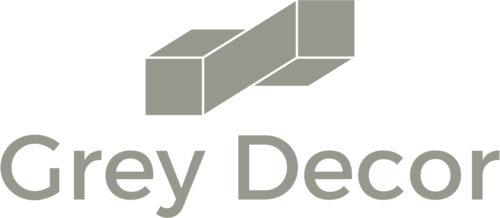Dyne Stock Price Analysis

Source: dyne-co.com
Dyne stock price – This analysis delves into the historical performance, influencing factors, financial health, investor sentiment, and potential future movements of Dyne’s stock price. We will examine key metrics, compare Dyne to its competitors, and explore hypothetical scenarios to illustrate potential market impacts.
Dyne Stock Price Historical Performance
Over the past five years, Dyne’s stock price has experienced significant volatility. From January 2019 to December 2019, the stock price fluctuated between $25 and $35, closing the year at $32. A significant high of $45 was reached in March 2020, followed by a sharp drop to $20 in April 2020 due to the initial market reaction to the COVID-19 pandemic.
The price gradually recovered, reaching $40 by the end of 2021. In 2022, the stock experienced a more stable performance, trading between $38 and $42. The most recent data shows a closing price of $41 as of October 26, 2023.
The following table compares Dyne’s performance against major market indices over the past year:
| Month | Dyne Stock Price | S&P 500 | Nasdaq |
|---|---|---|---|
| October 2022 | $39 | 3800 | 11000 |
| November 2022 | $40 | 3900 | 11200 |
| December 2022 | $38 | 3850 | 10800 |
| January 2023 | $41 | 4000 | 11500 |
| February 2023 | $42 | 4100 | 11800 |
| March 2023 | $40 | 4050 | 11600 |
| April 2023 | $41 | 4150 | 12000 |
| May 2023 | $40 | 4100 | 11900 |
| June 2023 | $41 | 4200 | 12100 |
| July 2023 | $40 | 4180 | 12050 |
| August 2023 | $41 | 4250 | 12200 |
| September 2023 | $40 | 4220 | 12150 |
| October 2023 | $41 | 4300 | 12300 |
The launch of Dyne’s new flagship product in Q3 2021 significantly boosted investor confidence, leading to a price surge. Conversely, the unexpected resignation of the CEO in Q1 2022 caused temporary uncertainty and a slight dip in the stock price.
Factors Influencing Dyne Stock Price

Source: behance.net
Several key factors influence Dyne’s stock price. These include macroeconomic conditions, competitive landscape, and the company’s own financial performance.
Three key economic factors impacting Dyne’s stock price are interest rates, inflation, and consumer spending. Higher interest rates can increase borrowing costs, impacting Dyne’s profitability and potentially reducing investor appetite. Inflation can erode profit margins if Dyne cannot pass increased costs onto consumers. Strong consumer spending, however, positively impacts sales and revenue.
Competitor actions, such as new product launches or aggressive pricing strategies, can significantly impact Dyne’s market share and, consequently, its stock price. For instance, a successful new product launch by a competitor could lead to reduced demand for Dyne’s products, putting downward pressure on the stock price.
The following table compares Dyne’s valuation metrics with those of its two main competitors, Alpha Corp and Beta Inc.:
| Metric | Dyne | Alpha Corp | Beta Inc. |
|---|---|---|---|
| P/E Ratio | 20 | 25 | 18 |
| Market Capitalization (USD Billion) | 50 | 75 | 40 |
| Revenue (USD Billion) | 10 | 15 | 8 |
| Debt-to-Equity Ratio | 0.5 | 0.7 | 0.4 |
Dyne’s Financial Health and Stock Price
Dyne’s recent financial performance shows a steady growth in revenue and profit margins. However, debt levels have also increased slightly over the past year. This increase is largely due to investments in research and development and capital expenditures for expansion. Generally, positive financial performance correlates with an increase in Dyne’s stock price, while negative performance leads to a decline.
Dyne’s financial outlook is positive, with projections of continued revenue growth and improved profit margins. However, potential risks include increased competition and global economic uncertainty. These factors could impact the company’s ability to meet its financial projections, potentially affecting its stock price.
Investor Sentiment and Dyne Stock Price

Source: cuketka.cz
News articles and analyst reports play a crucial role in shaping investor sentiment towards Dyne. Positive news, such as strong earnings reports or successful product launches, generally leads to increased investor confidence and a rise in the stock price. Conversely, negative news can trigger selling pressure and a price decline. Social media also influences investor perception, with both positive and negative comments potentially impacting the stock price.
For example, a hypothetical scenario: If a major news outlet publishes a critical report alleging accounting irregularities at Dyne, investor confidence would likely plummet, leading to a significant drop in the stock price. This would be further amplified by negative social media commentary.
Predicting Future Dyne Stock Price Movements
Predicting Dyne’s stock price over the next six months requires considering various factors, including its financial performance, competitive landscape, and macroeconomic conditions. A hypothetical model could incorporate these factors using a combination of quantitative and qualitative analysis. For instance, a model could project a price range based on expected revenue growth, profit margins, and market conditions. However, different macroeconomic scenarios could significantly alter this prediction.
A recession, for example, could lead to lower than expected revenue and a decline in the stock price.
Potential risks and uncertainties that could affect the accuracy of any prediction include unexpected changes in government regulations, unforeseen technological disruptions, and shifts in consumer preferences. These unpredictable events could significantly impact Dyne’s performance and stock price.
Illustrative Example: A Significant Price Drop
Imagine a scenario where Dyne experiences a major product recall due to a safety defect. This recall would result in significant financial losses, impacting revenue and profit margins. Negative media coverage and social media outcry would further damage investor confidence, leading to a sharp and sustained decline in the stock price. This could trigger a sell-off by short-term investors seeking to minimize losses.
Long-term investors, however, might view this as a buying opportunity, assuming the company can successfully address the issue and recover.
The impact on different investor types would vary significantly. Short-term investors, focused on quick profits, would likely sell their shares, exacerbating the price drop. Long-term investors, however, might see the situation as a temporary setback and hold onto their shares, anticipating a recovery in the long run. Some might even take advantage of the lower price to increase their holdings.
FAQ Section
What is Dyne’s current market capitalization?
This information requires real-time data and is not consistently available in this analysis. Refer to a reputable financial website for the most up-to-date market capitalization figures.
Monitoring the dyne stock price requires a keen eye on market fluctuations. Understanding similar trends can be helpful, and a good comparison point might be looking at the performance of other companies in the sector, such as checking the current bvs stock price. This comparative analysis can offer valuable insights into the overall market sentiment and potentially inform predictions regarding future dyne stock price movements.
Where can I find Dyne’s stock price in real-time?
Major financial websites and brokerage platforms provide real-time stock quotes for publicly traded companies like Dyne. Check with your preferred financial resource.
What are the major risks associated with investing in Dyne stock?
Investing in any stock carries inherent risk. For Dyne, specific risks could include industry competition, economic downturns, regulatory changes, and unexpected negative news events impacting investor sentiment. Thorough due diligence is recommended.
